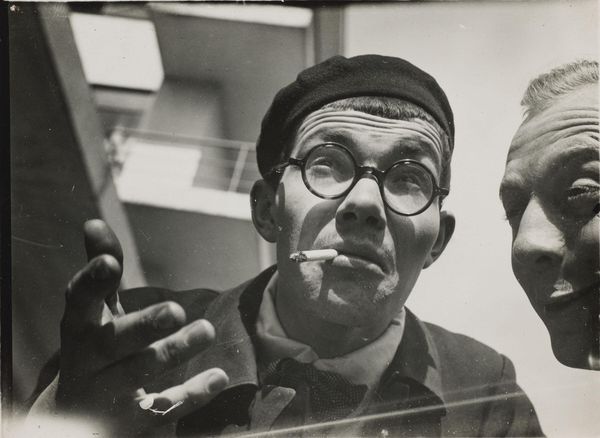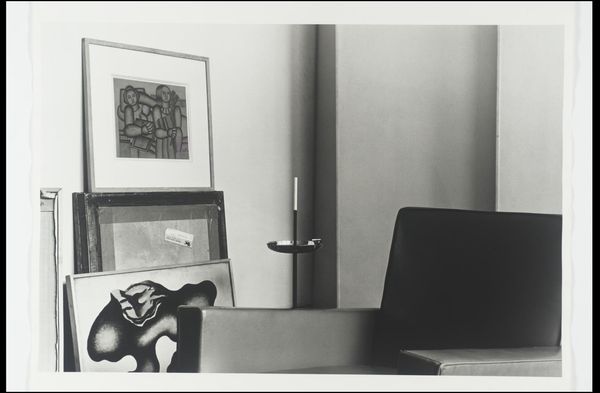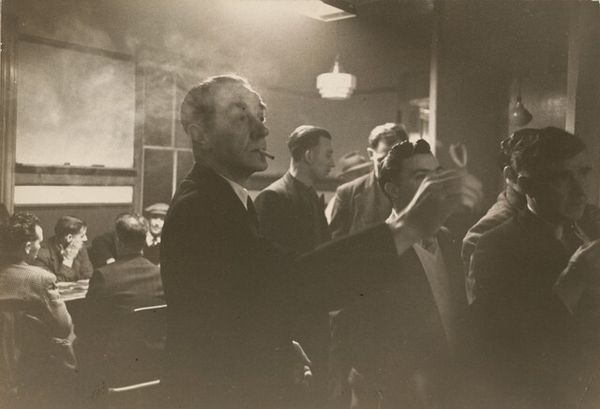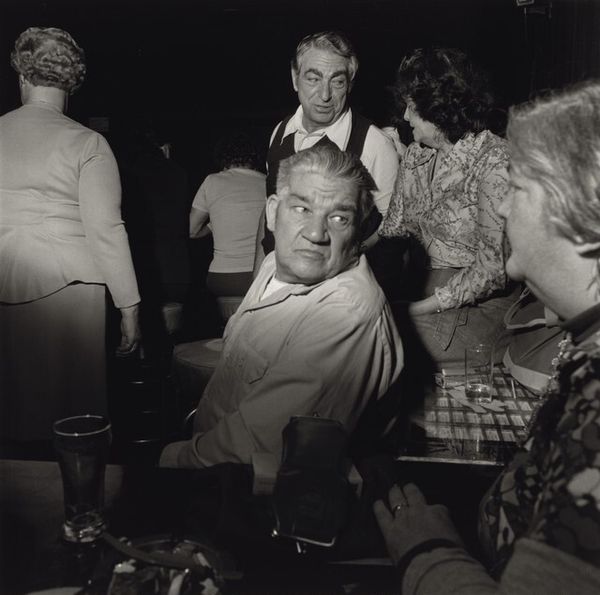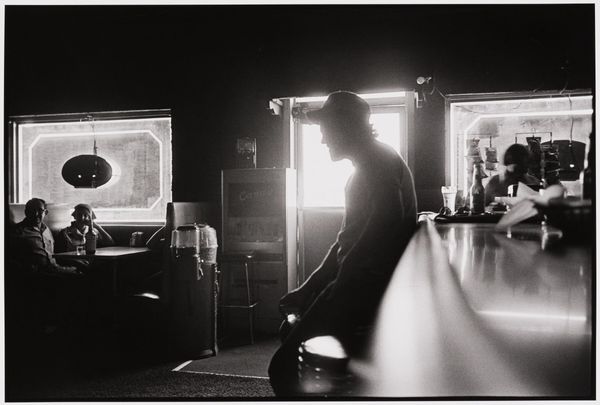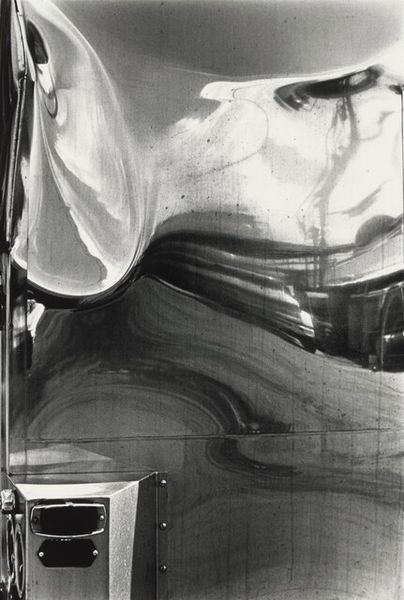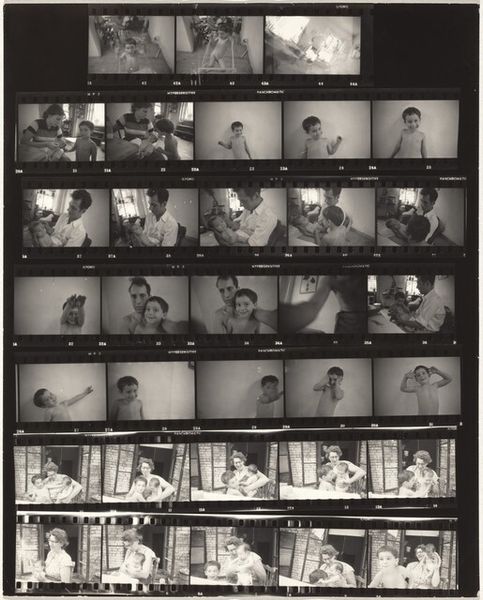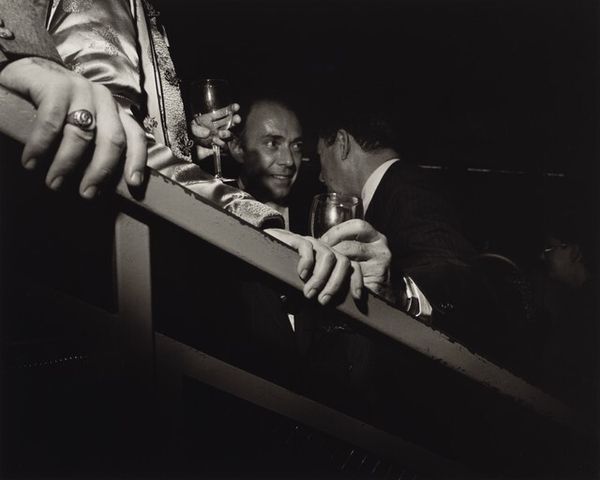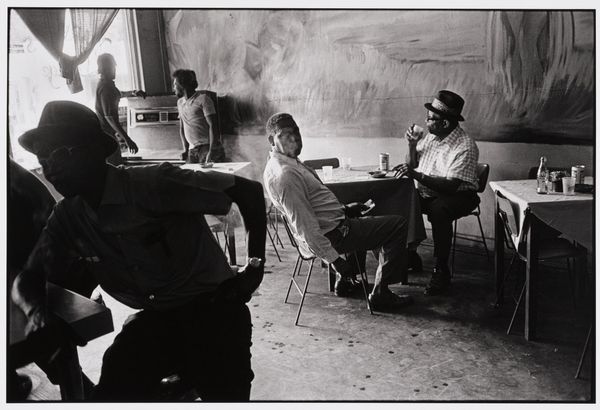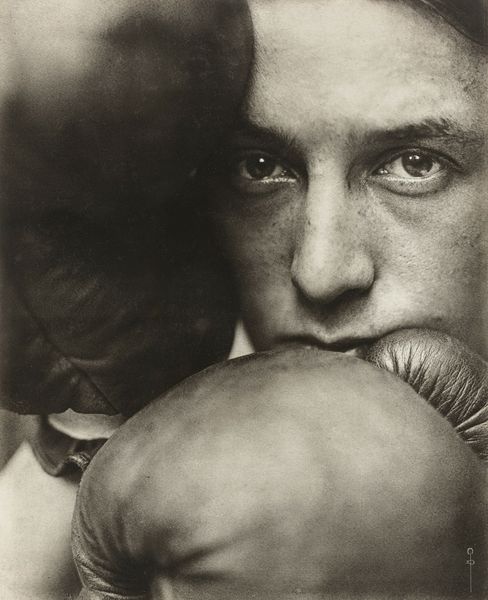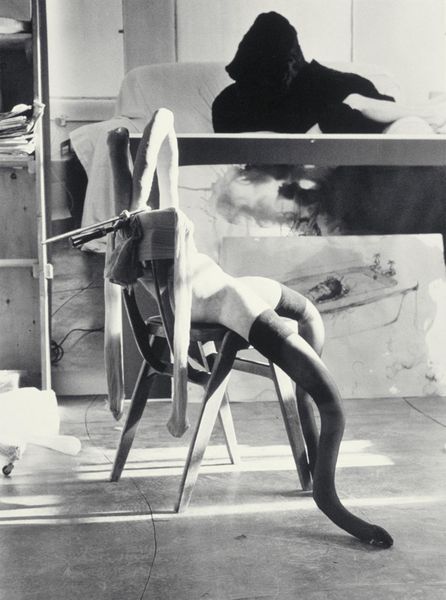
Dimensions: sheet: 50.5 × 41 cm (19 7/8 × 16 1/8 in.) image: 46.7 × 32.7 cm (18 3/8 × 12 7/8 in.) mat: 61 × 50.5 cm (24 × 19 7/8 in.)
Copyright: National Gallery of Art: CC0 1.0
Curator: This gelatin-silver print, taken by Gordon Parks sometime after 1960, captures Duke Ellington listening to playback in Los Angeles. What strikes you most about this image? Editor: It’s quite striking; I feel a real sense of reflection and introspection from the contrasting clarity and ghostly distortion of Duke's figure. His gaze upwards connects him to something beyond, something almost divine in its implied judgement. Curator: Parks was known for his documentary-style approach to photography, but here he creates this multi-layered scene to prompt those kinds of symbolic readings, especially about race, achievement, and the artist's self-perception within a dominant culture. The Black Arts Movement, I think, very much influences the making here. Editor: Absolutely, Parks actively manipulated those documentary tendencies to powerful expressive effect. I think, the double image speaks volumes. Consider how reflections and doubling function symbolically – the fragility of identity and legacy against an imposing presence, his inner critic… it's compelling. Curator: Consider also the means by which this image circulates; silver gelatin printing was crucial. That it's a reproducible object is part of its meaning – it can be distributed and become part of collective memory around the man, Duke Ellington, the artist, and Gordon Parks as another artist capturing him. The print itself carries value. Editor: And there's that poignant sense of memory in black and white—a familiar echo that almost all early photograph’s have. I find the black-and-white tone contributes a gravitas that echoes across eras. Curator: Parks used light, contrast, and photographic materials to forge connections to history, identity, and artistic creation. This makes the moment Ellington hears his work deeply embedded within the historical struggle around Black representation in media. Editor: Definitely, I agree. This portrait gives such nuanced psychological and historical context. I come away with much more than simply the fact of seeing the man; it lingers as a powerful meditation. Curator: Right. It certainly prompts many different connections across time and symbol to really think through legacy and its relationship to artistic output. Editor: I concur. A beautifully thought-provoking image that holds so much complexity.
Comments
No comments
Be the first to comment and join the conversation on the ultimate creative platform.
